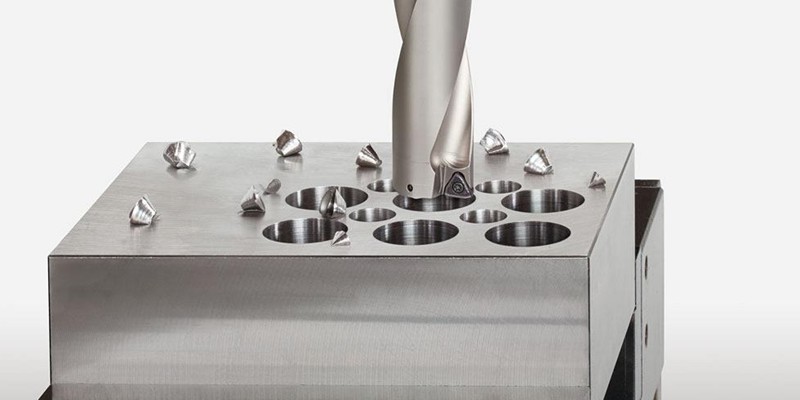- May 12, 2023
Manufacturing most parts needs drilling holes through the workpiece. While the process might sound straightforward, it requires the right method, tools, or drilling machines to get an excellent job. The method and tools used to drill metal and plastics differ due to their material properties.
In this article, we’d discuss how to drill a hole through metals and plastics and the tools required to drill the perfect hole. We’d also highlight different drilling machines and bits you can use for drilling purposes.
How to Drill Holes Through Metals?
There are several reasons why engineers and craftsmen drill holes through metals. The reasons could be structural, functional, aesthetic, or as one of the processes after milling. Regardless of the reason or purpose of the hole, here is how to drill a hole through metal.
Get the Right Drill Press and Bits for Metalworking
The drill press features an adjustable table placed under a motor-driven spindle. It also features a bit-holding chuck for lowering the spinning drill into the metal. To control the depth of the drilled hole, the operator raises or lowers the drill-press table or sets a depth stop.
Depending on the metal thickness, two major types of drill bits are used for making metal holes. The first is the sheet metal bit. This drill bit is ideal for drilling thin metals, as it cuts the metal in such a way that it does not tear. The other is the high-speed twist bit is ideal for thicker metals. This bit features a shank and flute that carry debris out of the hole.
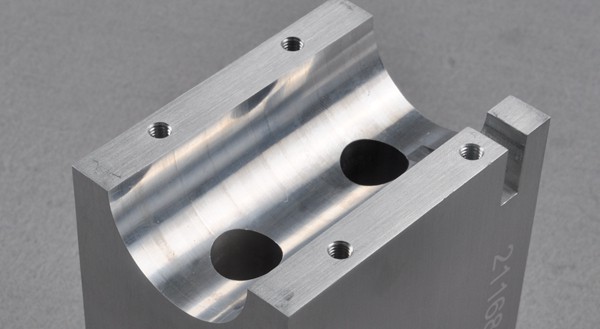
Mark the Hole on Metal
It is best to mark the hole to ensure you are drilling the right area of the metal. You can do this by using a scriber and a ruler to draw short lines intersecting at the center of the hole. It is best to make a small dent on the marked center point using a center punch to prevent the bit from wandering when the drilling commences.
Adjusting the Speed
Whether it is drilling holes, grinding, or other CNC process, speed plays a major role in determining precision. You can adjust or change drill speeds by opening the drill press belt guard and unscrewing the motor-housing knob to release tension built on the pulleys. Afterward, you can push the motor frame forward to ease slipping the pulley belt from one level to another.
Please note that the lowest speeds correspond to the lowest pulleys, while you can achieve the fastest speeds by looping the belt around the highest pulleys.
Drilling the Hole
To commence drilling, put the drill bit to make holes into the chuck and tighten it. Then clamp the metal workpiece onto the machine table or in a vise. Turn the drill press and drill while applying even pressure.
Keep your workpiece free from debris by brushing off shavings and chips as you drill. Add cutting fluid as you work to reduce friction and make cutting seamless. After drilling, retract the bit from the hole and turn off the power.
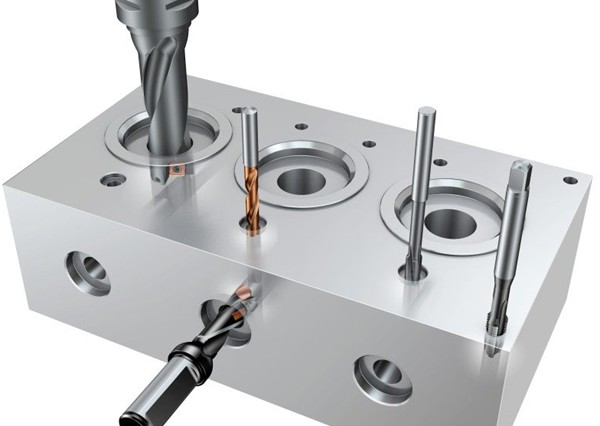
Tips to Drill A Hole in Metal
Drilling holes into the metal with a drill press can be risky. For instance, a workpiece clamped too loosely could get caught and sent flying by the spinning bit. So, to avoid accidents when using the drill press, it is best to avoid holding the workpiece with your hand while drilling. Instead, use at least two C clamps to hold the workpiece to the table.
Additionally, avoid wearing gloves when using the drill press, as loose fabric from the glove could get caught in the bit. Lastly, wear safety goggles to protect your eyes from chips and shavings.
How to Drill Holes Through Plastics?
Unlike drilling through metals, drilling holes wrongly through plastic would result in cracks and splinters. These defects could damage the aesthetics as well as the functionality of the part or product. To avoid these, here is how to drill a hole through plastic the right way.
Get Tools Ready
The tools you would need for successful drilling include a pencil, ruler, clamp, painter’s tape, twist bit, sandpaper, and lubricant.
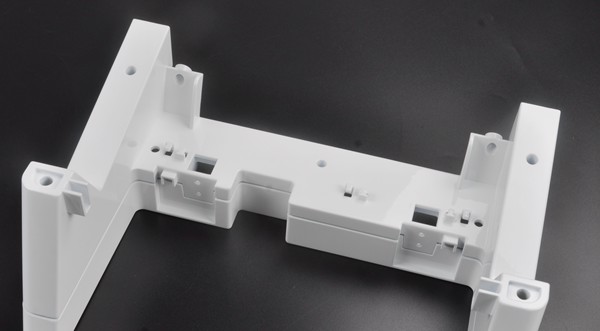
Mark the Drill Spot
Using the ruler and pencil, mark the areas on the plastic where you want to drill. This marking would help reduce possible drilling errors.
Secure the Plastic
Secure the plastic using a clamp on a surface that is stable and large enough to accommodate the area of the plastic you want to drill. The procedure for securing the plastic when drilling a hole is similar to that of boring machining, and it helps reduce the tendency for resistance to interfere with drilling.
Check for the Correct Drill Bit Size and Insert
After securing the plastic, the next step would be double-checking for the correct bit size. On confirmation of drill size, place the bit in the drill and tighten it. Then move the drill forward.
Start with the Slowest Drill Speed
If your drill has an adjustment knob, choose the slowest drill speed. But if it does not, lightly place the bit on the plastic before drilling. During drilling, always monitor the consistency of chips produced. If you notice chips are beginning to gum up, it is best to stop drilling that area to allow it to cool.
Tips for Drilling Holes Through Plastic
Drilling hole through plastic is not an easy process, which is why you must follow basic tips to get right. Here are tips for drilling a hole through the plastic.
- Do not drill the plastic continuously. Instead, stop often to avoid overheating, which could melt the plastic.
- Start drilling the plastic with a slow speed, and increase speed as drilling progresses.
- Always use a clamp to hold the plastic workpiece in place to avoid accidents.
- After drilling, ensure to remove the sports on the plastic workpiece.
Different Drilling Machines to Drill A Hole
Drilling machines come in various designs, each created with a specific use. Here are some of the common machine types.
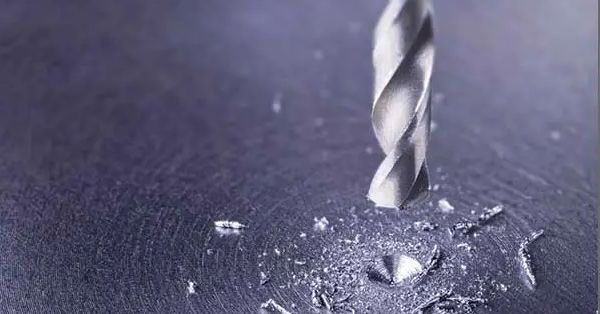
1. Radial Arm CNC Drill Press
This drilling machine has its spindle mounted on a rotatable arm. This arm rotates around the column, allowing the radial movement of the spindle, feed mechanism, and drill head. One benefit of this machine is that it allows drilling in multiple locations without changing the workpiece’s position.
2. Multiple Spindle Drilling Machine
This machine simultaneously drills several holes into a single workpiece, following the same pattern for each section. It is ideal for manufacturing similar parts in large quantities.
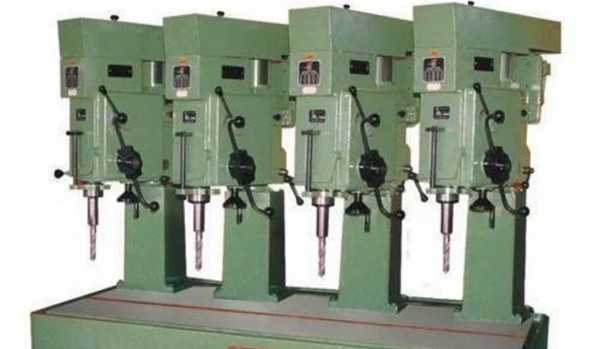
3. Gang Drilling Machine
A gang drilling machine comprises numerous independent columns, each mounted to a common base and equipped with its motor and spindle. These tools are generally employed when several subsequent operations, such as drilling and tapping-threaded holes, must be carried out.
4. Turret-Type Drilling Machine
A spinning turret is the focal point of a turret drilling machine. This machine is typically ideal for mass production drilling, where numerous holes of various sizes and depths must be drilled in a single piece. One hole is only ever drilled at a time by turret-style drilling equipment.
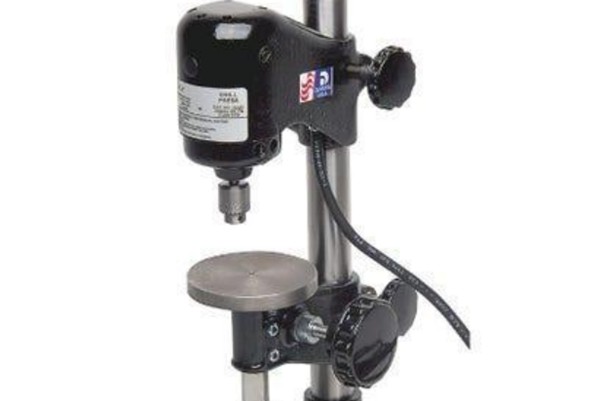
5. Micro Drill Press
This small drilling device uses a manually controlled feed to make extremely precise microscopic holes. These machines are used in industries like electronics or jewelry production where precise, little holes are needed.
6. Upright CNC Drill Press
This machine features a power feed mechanism that drives the tool into the workpiece without human intervention. Furthermore, upright drilling machines are ideal for heavy-duty applications due to their robust construction.
7 Types of Hole-making Tools
1. Drill Bits
These tools make it economical and easy to machine holes. Drill bits function by axially entering the workpiece before cutting a blind through a hole. There are different types of drill bits ideal for you in a variety of industries.
The common drill bits include twist drill bit, center drill bit, tap drill bit, spot drill bit, Masonry drill bit, and step drill bit.
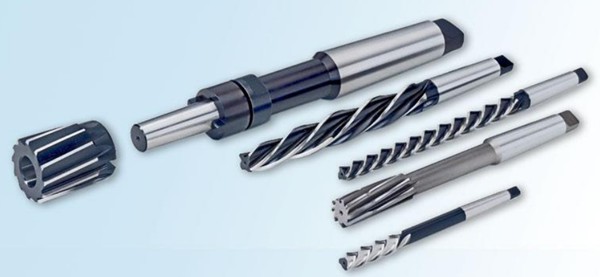
2. Reamers
Reamers are often used after drilling to get holes with the most precise hole diameter. The chuck reamer is the kind of reamer type that is most frequently used. There are also Morse taper reamers, automobile reamers, reamers for welding equipment, taper pin reamers, and reamers for die makers.
3. Hole Cutters
Cutting precisely round holes in metal, wood, and other materials requires hole cutters, also known as hole saws. These tools can cut much wider diameters than a typical drill bit. They are also a very effective substitute for other tools because they simply need to cut the hole’s perimeter. Hole cutters have separate carbide-tipped cutting teeth, just like circular saw blades.
4. Countersinks & Chamfering Drill Bits
Drill bits with chamfers and countersinks are ideal for drilling cone-shaped holes in objects. Furthermore, a countersink bit expands an existing hole with a cone-shaped opening at the top when it enters a workpiece axially. These commercial hole-punching devices let fasteners sit well against a workpiece.
Tool bits for countersinking and chamfering are available in various sizes and forms for the drilling needs as well as preferences. Angles like 60°, 82°, 90°, 100°, 118°, and 120° are typical countersink angles.
5. Center Drills
Center drills feature a pilot drill and countersink. On a workpiece, they are typically utilized to create a center hole for easy turning between centers and support for the load as it rotates. Due to their extreme stiffness and low propensity to wander, these hole-making instruments are advantageous. Additionally, the average center drill bit hole angle is 60°.
6. Broaches
This is a multi-toothed tool that drills holes. Its length makes the broach ideal for making deeper cuts. Broaching is an important phase of drilling as it facilitates the production of parts with an incredible surface finish. This tool’s most common types include shell, keyway, push and pull, external surface, and internal broaches.
7. Counterbores Bits
Counterboring, typically done after drilling, is perfect for applications where a fastener must sit square with a workpiece surface. Typically, these counterbores making instruments have two different cutting diameters: one for the hole and one for the recess in the head.
Considerations and Tips for Drilling Holes
Like CNC engraving or other CNC machining processes, there are some challenges associated with hole drilling, especially deep holes. Here are some tips to take into consideration when drilling holes.
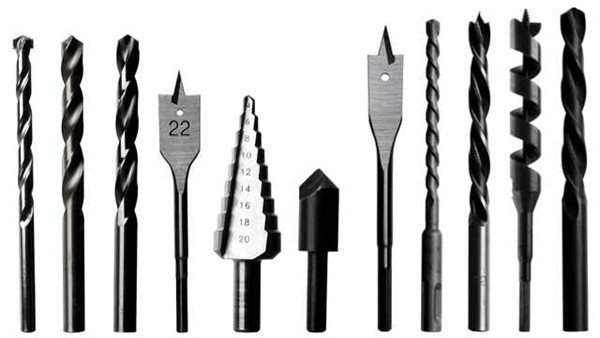
Select the Right CNC Drilling Head
Numerous drill bits exist based on their construction, design, and intended uses. Choosing the proper CNC drilling head can be difficult and is a common cause of many drilling problems. By verifying compatibility, you can be sure you are using the right drilling head. A better choice would be to discuss the optimal strategy with a drilling specialist or service provider.
Chip Removal and Breaking
Whether you are drilling holes through metals or plastics, ensure to clear up the chips during and after the hole drilling process. Controlling them is crucial because they can lead to a variety of issues.
One way to control chip formation is by using a special chip-breaking bit to split the chips apart, making them simpler to remove and install a chip breaker. Additionally, reducing them to smaller chips enhances drilling performance and heat dissipation. Use an intermittent feed while increasing the feed.
Feeds and Speeds
The material type and shape determine the feed rate and drilling speed you would use for the procedure. Generally, the best-recommended feed rate to drill a pilot hole (maximum ½’’ diameter) through hard plastic is using a positive feed of 0.005’’ to 0.015 per revolution and 600 to 1000 rpm. However, metals can take a fast feed rate, while drilling plastics at a fast rate could result in splintering and cracks.
Choose Wayken for Your Hole Drilling Projects
Wayken is an ISO-certified company specializing in hole making and CNC machining services for different machined parts regardless of internal features’ complexity and close tolerances. We focus on our customer’s economic drivers, guaranteeing cost reduction and reduced lead times. Want to know more about our hole drilling service or request a quote? Contact us today.
Conclusion
Drilling is an important aspect of product and part manufacture as it creates holes for assembly and coupling. While the drilling process sounds relatively straightforward, it is usually not so, as it requires technical expertise for a professional finish.
FAQs
What is the CNC code for drilling a hole?
There are three major CNC codes for drilling holes; G81, G82, and G83. The G81 is the most common cycle. An example of typical G81 queues is X50.0, Y30.0, Z-10.0, R1.0, and F50.0 in G81: The initial hole’s location about the datum is represented by the ‘X’ and ‘Y’ coordinates.
How deep can a CNC drill?
Drilling should never go deeper than 12 times the closest bit diameter. Drill bits that are this long or longer lose stiffness and the ability to maintain a tight tolerance and are more likely to break. Consider making the hole diameter larger if you do need to dig deeper.
What tool is best for drilling holes?
Cutting precisely round holes in metal, wood, and plastic materials better choose hole cutters, also known as hole saws. This metalworking equipment can cut much wider diameters than a typical drill bit.

